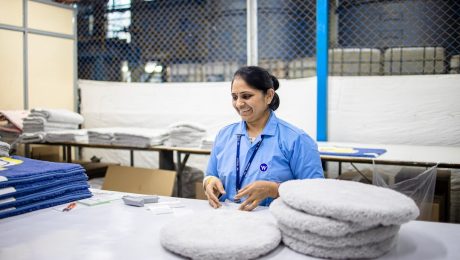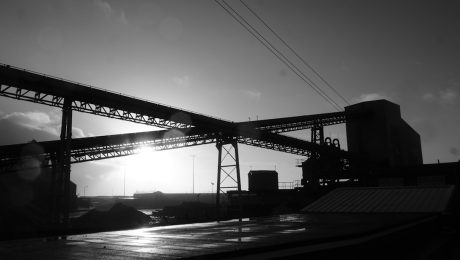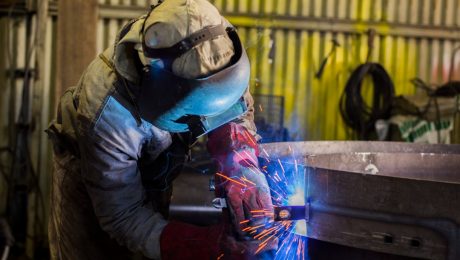Expanding your business to 40+ countries is a monumental undertaking, requiring a sophisticated and adaptable export strategy. This isn’t a one-size-fits-all approach; each market presents unique challenges and opportunities. This comprehensive guide will break down the key elements to help you navigate this complex landscape and successfully penetrate diverse international markets.
1. Thorough Market Research: Identifying Your Ideal Export Destinations
Before even considering logistics, you need to identify which 40+ countries are truly viable for your product or service. This requires in-depth market research, going beyond simple export statistics. Consider:
- Market Size and Growth Potential: Analyze market size, growth rates, and future projections for your specific product category in each target country. Tools like Statista, Euromonitor, and IBISWorld can provide valuable data.
- Competitive Landscape: Identify your key competitors in each market. What are their strengths and weaknesses? How can you differentiate your offering?
- Consumer Behavior and Preferences: Understand cultural nuances, consumer preferences, and buying habits. Local market research firms can provide invaluable insights into consumer behavior.
- Regulatory Environment: Research import regulations, tariffs, and any specific requirements for your product. This is crucial to avoid costly delays or rejections.
- Economic and Political Stability: Assess the political and economic stability of each target country. High levels of political risk or economic instability can significantly impact your business operations.
This research will help you prioritize countries based on their potential return on investment and the feasibility of entering the market.
2. Navigating International Trade Regulations and Compliance
Exporting involves a complex web of regulations and compliance requirements. Ignoring these can lead to hefty fines, delays, and even the seizure of your goods. Key areas to consider include:
- Export Licensing and Permits: Determine if you need any export licenses or permits for your products in each target country. These requirements vary significantly depending on the product, the destination country, and your country of origin.
- Customs Procedures and Documentation: Familiarize yourself with customs procedures, required documentation (e.g., commercial invoices, packing lists, certificates of origin), and HS codes (Harmonized System codes) for your products.
- Trade Agreements and Tariffs: Understand any trade agreements that might reduce or eliminate tariffs between your country and your target markets. Utilize resources like the World Trade Organization (WTO) website for detailed information.
- Product Standards and Certifications: Many countries have specific product standards and certifications that your products must meet before they can be imported. Research these requirements early in the process to avoid costly rework.
- Intellectual Property Protection: Protect your intellectual property rights in each target market by registering patents, trademarks, and copyrights as needed.
Engaging a customs broker or international trade consultant can significantly simplify this process.
3. Optimizing Your International Logistics and Supply Chain
Efficient logistics are crucial for successful exporting. Consider the following:
- Choosing the Right Shipping Method: Select the most cost-effective and reliable shipping method based on factors like product type, delivery time requirements, and budget. Options include sea freight, air freight, and courier services.
- International Freight Forwarders: Partnering with a reputable international freight forwarder can streamline the shipping process, handle customs clearance, and manage potential delays.
- Inventory Management: Implement an effective inventory management system to ensure you have enough stock to meet demand without tying up excessive capital.
- Warehousing and Distribution: Determine whether you need to establish warehousing facilities in your target markets or utilize third-party logistics providers (3PLs).
- Supply Chain Risk Management: Develop strategies to mitigate potential risks throughout your supply chain, such as geopolitical instability, natural disasters, and supply chain disruptions.
A well-planned logistics strategy is essential for minimizing costs and ensuring timely delivery of your products.
4. Effective International Marketing and Sales Strategies
Marketing and sales strategies must be tailored to the specific cultural contexts and consumer preferences of each target market. Consider:
- Localization: Adapt your marketing materials (website, brochures, advertising) to reflect the local language, culture, and preferences.
- Digital Marketing: Leverage digital channels such as social media, search engine optimization (SEO), and online advertising to reach potential customers.
- International Sales Channels: Explore different sales channels, such as direct sales, distributors, agents, or e-commerce platforms.
- Building Relationships: Cultivate strong relationships with local partners, distributors, and customers to build trust and credibility.
- Cultural Sensitivity: Be mindful of cultural differences in business etiquette, communication styles, and negotiation tactics.
Effective international marketing requires a deep understanding of your target markets and a willingness to adapt your strategies accordingly.
5. Managing Financial Aspects of International Trade
Managing the financial aspects of international trade requires careful planning and attention to detail. Consider:
- Payment Methods: Choose secure and reliable payment methods, such as letters of credit, documentary collections, or international wire transfers.
- Currency Exchange Rates: Manage currency exchange rate risks by using hedging strategies or incorporating exchange rate fluctuations into your pricing.
- International Taxation: Understand the tax implications of exporting, including VAT (Value Added Tax), import duties, and other relevant taxes.
- Financing Options: Explore financing options such as export credit agencies, commercial banks, or private equity to support your export activities.
- Financial Reporting: Maintain accurate financial records and reports to track your export performance and manage your finances effectively.
Proper financial management is crucial for the long-term success of your international business ventures.
Successfully exporting to 40+ countries demands meticulous planning, adaptability, and a deep understanding of international trade. By addressing each of these key areas, you can significantly increase your chances of success in the global marketplace.
SEO Tags:
Export Strategy, International Trade, Global Expansion, Market Research, International Logistics
In today’s complex and interconnected global supply chains, ensuring product traceability is no longer a luxury but a necessity. From enhancing consumer confidence and ensuring product safety to streamlining recalls and improving operational efficiency, a robust traceability system is the cornerstone of a successful and responsible manufacturing operation. This comprehensive guide will delve into the intricacies of product traceability, exploring its benefits, methodologies, challenges, and future trends.
1. The Pillars of Product Traceability: Why It Matters
Product traceability, in its simplest form, is the ability to track a product’s journey from its origin (raw materials) through each stage of its production, distribution, and ultimately, to the end consumer. This seemingly simple concept has far-reaching implications across multiple facets of a manufacturing business:
- Enhanced Consumer Safety & Confidence: Traceability allows for swift identification and isolation of contaminated or faulty products, minimizing the risk of widespread harm and protecting brand reputation. Consumers are increasingly demanding transparency, and traceability provides the necessary evidence of responsible production.
- Efficient Recall Management: In the event of a product recall, a well-implemented traceability system drastically reduces the time and cost associated with identifying and retrieving affected products. This minimizes financial losses and maintains customer trust.
- Improved Supply Chain Visibility: Traceability offers a clear view of the entire supply chain, highlighting potential bottlenecks, inefficiencies, and areas for improvement. This allows for proactive problem-solving and optimized resource allocation.
- Compliance and Regulatory Adherence: Many industries are subject to stringent regulatory requirements regarding product traceability. A robust system ensures compliance, avoiding hefty fines and legal repercussions.
- Enhanced Quality Control: By tracking individual components and batches, manufacturers can pinpoint the source of quality issues, enabling targeted corrective actions and preventing future defects.
2. Methods and Technologies for Implementing Traceability
Implementing a comprehensive traceability system requires a strategic approach leveraging various technologies and methods:
- Barcode and RFID Technology: Barcodes and Radio-Frequency Identification (RFID) tags are widely used for tracking individual products and components throughout the supply chain. RFID offers superior capabilities for automated data capture and real-time tracking.
- Blockchain Technology: Blockchain’s decentralized and immutable nature offers enhanced security and transparency for tracking product information. It creates a tamper-proof record of a product’s journey.
- Serialisation and Aggregation: Serialisation assigns a unique identifier to each individual product, while aggregation links individual items into larger batches for easier management. This combination provides granular tracking capabilities.
- Data Management Systems: Robust data management systems are essential for storing, processing, and analyzing traceability data. These systems should be integrated with other enterprise resource planning (ERP) systems for seamless data flow.
- GPS Tracking: For products transported over long distances, GPS tracking provides real-time location information, enabling efficient logistics and timely delivery.
3. Overcoming the Challenges of Product Traceability
Implementing and maintaining a successful traceability system presents several challenges:
- Cost of Implementation: The initial investment in technology, software, and training can be significant. However, the long-term benefits often outweigh the initial costs.
- Data Integration and Management: Integrating data from various sources across the supply chain can be complex and require significant effort. Data security and privacy are also crucial considerations.
- Lack of Standardization: The absence of universal standards for data formats and communication protocols can hinder interoperability between different systems and partners.
- Supply Chain Complexity: Managing traceability across complex and global supply chains with numerous suppliers and distributors requires meticulous planning and coordination.
- Resistance to Change: Implementing new systems and processes can encounter resistance from employees who are accustomed to traditional methods.
4. The Future of Product Traceability: Emerging Trends
The field of product traceability is constantly evolving, with several emerging trends shaping its future:
- Artificial Intelligence (AI) and Machine Learning (ML): AI and ML can be used to analyze traceability data, identify patterns, predict potential problems, and optimize supply chain processes.
- Internet of Things (IoT): The proliferation of connected devices allows for real-time tracking and monitoring of products throughout the supply chain.
- Digital Twins: Creating a virtual representation of a product allows for simulations and predictive analysis, improving quality control and optimizing production processes.
- Increased Consumer Demand for Transparency: Consumers are increasingly demanding more information about the origin and journey of their products, driving the need for enhanced traceability solutions.
- Government Regulations and Initiatives: Governments worldwide are implementing stricter regulations regarding product traceability, further incentivizing businesses to adopt robust systems.
5. Building a Robust Traceability System: Best Practices
To build a truly effective product traceability system, consider these best practices:
- Define Clear Objectives: Clearly define your goals for implementing traceability, whether it’s improving recall management, enhancing consumer confidence, or meeting regulatory requirements.
- Choose the Right Technology: Select technologies that align with your specific needs and budget, considering factors like scalability, integration capabilities, and data security.
- Collaborate with Supply Chain Partners: Effective traceability requires collaboration with suppliers, distributors, and other stakeholders throughout the supply chain.
- Implement Robust Data Management Practices: Establish secure and efficient processes for collecting, storing, and managing traceability data.
- Regularly Review and Improve: Continuously monitor the effectiveness of your traceability system and make adjustments as needed to ensure optimal performance.
Implementing a robust product traceability system is a crucial step towards building a more efficient, transparent, and responsible manufacturing operation. By addressing the challenges and embracing emerging technologies, manufacturers can unlock the full potential of traceability and gain a significant competitive advantage in today’s dynamic marketplace.
Tags: Product Traceability, Manufacturing Traceability, Supply Chain Traceability, Blockchain in Manufacturing, RFID in Manufacturing
body {
font-family: sans-serif;
line-height: 1.6;
}
h1, h2, h3 {
color: #333;
}
The steel industry, a cornerstone of global infrastructure and manufacturing, faces a critical challenge: decarbonization. With its significant contribution to global greenhouse gas emissions, achieving net-zero targets is paramount for a sustainable future. This post delves into the complexities of reaching this ambitious goal, exploring the hurdles, innovative solutions, and the crucial steps needed to transform this historically high-emission industry.
The Carbon Footprint of Steel: Understanding the Challenge
Steel production is inherently energy-intensive, relying heavily on the blast furnace process. This process, which uses coking coal as a reductant to extract iron from iron ore, is a major source of CO2 emissions. Beyond direct emissions from the blast furnace, significant indirect emissions arise from electricity consumption, raw material extraction and transportation, and the production of coke itself. The sheer scale of global steel production means even small reductions in emissions per tonne can have a significant global impact. Quantifying and accurately tracking these emissions across the entire supply chain is a crucial first step towards effective decarbonization strategies. Life cycle assessments (LCAs) are becoming increasingly important for understanding the full environmental impact of different steel production methods and identifying areas for improvement.
Innovative Technologies for Decarbonization: A Technological Revolution
The pursuit of net-zero steel requires a radical shift away from traditional blast furnace methods. Several promising technologies are emerging as potential game-changers: Hydrogen-based direct reduction is a leading contender, replacing coking coal with hydrogen as the reducing agent. This process significantly reduces CO2 emissions, and if green hydrogen (produced using renewable energy) is used, it can achieve near-zero emissions. Electric arc furnaces (EAFs), which use electricity to melt scrap steel, are also crucial, offering a lower-carbon alternative for steelmaking when powered by renewable energy sources. Carbon capture, utilization, and storage (CCUS) technologies offer another pathway, capturing CO2 emissions from blast furnaces and either storing them underground or utilizing them in other industrial processes. Further research and development are crucial to improve the efficiency and scalability of these technologies.
Policy and Regulatory Frameworks: Driving the Transition
Government policies play a vital role in accelerating the transition to net-zero steel. Carbon pricing mechanisms, such as carbon taxes or emissions trading schemes, can incentivize steel producers to invest in low-carbon technologies. Subsidies and tax breaks for green steel production can also encourage innovation and adoption. Stringent emission reduction targets and regulations can further drive the industry towards decarbonization. International collaboration is also essential to ensure a level playing field and prevent carbon leakage, where production shifts to countries with less stringent environmental regulations. Harmonizing standards and creating a global framework for sustainable steel production will be critical for success.
The Role of Circular Economy Principles: Reducing, Reusing, Recycling
Implementing a circular economy approach within the steel industry is crucial for reducing its environmental footprint. This involves maximizing the reuse and recycling of steel scrap, minimizing waste generation, and extending the lifespan of steel products. Improving the efficiency of steel recycling processes and developing new technologies to handle different types of scrap can significantly reduce the demand for virgin materials and lower overall emissions. Designing steel products for recyclability and promoting sustainable procurement practices are also essential components of a circular economy strategy. By closing the loop and minimizing the reliance on virgin materials, the industry can drastically cut its carbon emissions.
Collaboration and Partnerships: A Shared Responsibility
Achieving net-zero targets in steel production requires a collaborative effort involving steel producers, technology developers, researchers, policymakers, and consumers. Sharing knowledge, best practices, and technological advancements is crucial for accelerating the transition. Public-private partnerships can foster innovation and facilitate the deployment of new technologies. Investing in research and development is essential to overcome technical hurdles and improve the cost-effectiveness of low-carbon steelmaking processes. Engaging with consumers to promote sustainable consumption patterns and raise awareness about the environmental impact of steel production is also vital for creating a market demand for green steel.
The path to net-zero steel is challenging but achievable. By combining technological innovation, supportive policies, circular economy principles, and collaborative partnerships, the steel industry can forge a greener future and contribute to a more sustainable world.
Tags: Net-zero steel, Green steel, Steel decarbonization, Sustainable steel production, Climate change steel
International trade offers immense opportunities for growth and expansion, but it also presents a unique set of challenges. Navigating the intricacies of global markets requires a robust risk management strategy. This comprehensive guide will explore the key risks involved in international trade and provide practical strategies for mitigating them, ultimately helping your business thrive in the global arena.
Political and Regulatory Risks in International Trade
Political instability, changes in government regulations, and trade wars can significantly impact international trade. A sudden change in import/export duties, sanctions imposed on a trading partner, or even civil unrest in a key market can disrupt supply chains and lead to substantial financial losses. To mitigate these risks, businesses should:
- Conduct thorough due diligence: Research the political and regulatory landscape of your target markets, including their history of political stability, trade policies, and legal frameworks.
- Diversify your supply chains: Don’t rely on a single supplier or market. Diversification reduces your vulnerability to disruptions in one specific region.
- Engage with local partners: Collaborating with local businesses can provide valuable insights and connections, helping you navigate local regulations and political complexities.
- Monitor political and regulatory developments: Stay informed about potential changes through news sources, industry publications, and government websites.
- Consider political risk insurance: This type of insurance can provide financial protection against losses caused by political events.
Financial Risks: Currency Fluctuations and Payment Security
Fluctuations in exchange rates can significantly impact the profitability of international transactions. Furthermore, ensuring timely and secure payments across borders presents another significant financial challenge. Businesses can mitigate these risks by:
- Hedging against currency fluctuations: Utilize financial instruments like forward contracts or options to lock in exchange rates and protect against losses due to currency volatility.
- Using letters of credit: These documents guarantee payment to the seller once specific conditions are met, reducing the risk of non-payment.
- Choosing appropriate payment methods: Select payment methods that offer the right balance between security and cost-effectiveness, considering factors like transaction fees and processing times.
- Working with reputable banks and financial institutions: Partnering with established institutions with international experience can reduce your exposure to financial risks.
- Thoroughly vetting your trading partners: Conducting credit checks and background checks on your international partners can help avoid potential financial losses.
Logistical Risks: Transportation and Supply Chain Disruptions
International trade involves complex logistics, and disruptions can occur at any stage of the supply chain. Delays in shipping, damage to goods during transit, and customs clearance issues can all impact profitability and delivery timelines. Mitigation strategies include:
- Choosing reliable shipping partners: Select experienced freight forwarders and carriers with a proven track record of on-time delivery.
- Utilizing appropriate insurance coverage: Cargo insurance protects against losses due to damage, theft, or loss during transit.
- Optimizing your supply chain: Streamlining your processes and utilizing technology can improve efficiency and reduce the risk of delays.
- Developing contingency plans: Having backup plans in place for potential disruptions, such as alternative shipping routes or suppliers, can minimize the impact of unforeseen events.
- Understanding customs regulations: Familiarize yourself with the import and export regulations of all countries involved in your trade activities to avoid delays and penalties.
Legal and Contractual Risks: Compliance and Dispute Resolution
International trade involves navigating different legal systems and contract laws. Disputes can arise concerning contract terms, intellectual property rights, or product liability. To manage these risks:
- Seek legal counsel: Engage experienced international trade lawyers to advise on contract negotiation, compliance, and dispute resolution.
- Use clear and comprehensive contracts: Ensure your contracts clearly define terms, responsibilities, and dispute resolution mechanisms.
- Understand international law: Familiarize yourself with relevant international treaties and conventions that govern international trade.
- Establish effective communication channels: Clear and consistent communication with your trading partners can help prevent misunderstandings and disputes.
- Consider arbitration or mediation: These alternative dispute resolution methods can be more efficient and cost-effective than litigation.
Operational Risks: Managing Data Security and Cultural Differences
Operational risks encompass a broad range of issues, including data security breaches, cultural misunderstandings, and language barriers. Effective risk management requires:
- Implementing robust data security measures: Protect sensitive information, such as customer data and financial records, from unauthorized access.
- Understanding cultural nuances: Be aware of the cultural differences between your business and your trading partners to avoid misunderstandings and build strong relationships.
- Employing qualified translators and interpreters: Accurate translation and interpretation are crucial for effective communication and avoid costly errors.
- Establishing clear communication protocols: Develop a system for clear and consistent communication with your international partners.
- Investing in training and development: Equip your staff with the skills and knowledge necessary to navigate the complexities of international trade.
By proactively addressing these risks, businesses can significantly improve their chances of success in the global marketplace. Remember that a comprehensive risk management strategy is an ongoing process that requires continuous monitoring, adaptation, and improvement.
Tags: International Trade, Risk Management, Global Trade, Supply Chain Risk, International Business
Pipe bending and straightening are crucial processes in various industries, from construction and manufacturing to oil and gas. Achieving precise bends and restoring straightness requires understanding the different techniques, equipment, and materials involved. This comprehensive guide explores the intricacies of these processes, offering valuable insights for professionals and enthusiasts alike.
1. Understanding Pipe Bending Techniques
Pipe bending involves shaping a pipe into a specific curve or angle without compromising its structural integrity. Several techniques are employed, each suited to different pipe materials, diameters, and desired bend radii. These include:
- Manual Bending: This method uses hand tools like pipe benders and is suitable for smaller diameter, thinner-walled pipes made from malleable materials like copper or aluminum. Accuracy can be challenging, and the process is labor-intensive.
- Hydraulic Bending: Hydraulic pipe benders utilize hydraulic pressure to create controlled bends. This method offers greater precision and is suitable for a wider range of pipe materials and sizes, including steel and stainless steel. Different die sets allow for varying bend radii.
- Roll Bending: Roll benders use three rollers to progressively bend the pipe. This method is ideal for large-diameter pipes and produces consistent bends with minimal distortion. It’s commonly used in the construction of large structures and pipelines.
- Rotary Draw Bending: This advanced technique uses a rotating die and a clamping mechanism to pull the pipe through the die, creating a precise bend. It’s particularly effective for achieving tight radii and is commonly used in aerospace and automotive applications.
The choice of bending technique depends on factors like pipe material, diameter, wall thickness, bend radius, and the desired level of precision.
2. Pipe Straightening Methods and Equipment
Straightening bent or damaged pipes is equally important. Several methods exist, each with its own advantages and limitations:
- Mechanical Straightening: This involves using equipment like straightening presses or rollers to physically straighten the pipe. This method is effective for relatively minor bends but might cause damage if not carefully controlled. It’s often used for smaller diameter pipes.
- Thermal Straightening: This technique involves heating the bent section of the pipe to increase its malleability and then applying pressure to restore its straightness. Careful control of temperature is crucial to avoid damaging the pipe. It’s suitable for various pipe materials but requires specialized equipment.
- Hydraulic Straightening: Similar to hydraulic bending, hydraulic straightening uses controlled hydraulic pressure to straighten the pipe. This method offers precision and is suitable for various pipe materials and sizes.
The selection of a straightening method depends on the severity of the bend, the pipe material, and the available equipment.
3. Choosing the Right Pipe Material for Bending and Straightening
The material of the pipe significantly influences the bending and straightening process. Different materials exhibit varying degrees of malleability and ductility, affecting the ease of bending and the risk of damage during straightening. Common pipe materials include:
- Steel: Strong and durable, steel pipes require specialized bending and straightening equipment due to their high tensile strength.
- Stainless Steel: Possessing excellent corrosion resistance, stainless steel pipes are also strong and require careful handling during bending and straightening to avoid work hardening.
- Copper: Highly malleable and ductile, copper pipes are relatively easy to bend and straighten using manual or hydraulic methods.
- Aluminum: Lightweight and malleable, aluminum pipes are also relatively easy to bend and straighten but require careful handling to avoid kinking.
- PVC: Thermoplastic pipes like PVC are often bent using heat, requiring careful temperature control to avoid damage.
Understanding the material properties is crucial for selecting the appropriate bending and straightening techniques and equipment.
4. Safety Precautions in Pipe Bending and Straightening
Pipe bending and straightening can be hazardous if proper safety measures aren’t followed. Crucial safety precautions include:
- Personal Protective Equipment (PPE): Always wear appropriate PPE, including safety glasses, gloves, and hearing protection.
- Proper Equipment Operation: Ensure that all equipment is properly maintained and operated according to manufacturer instructions.
- Safe Work Practices: Follow established safety procedures and avoid working alone. Use proper lifting techniques to avoid injury.
- Emergency Procedures: Be familiar with emergency procedures and have a plan in place in case of accidents.
Prioritizing safety is paramount to prevent injuries and ensure a safe working environment.
5. Advanced Considerations and Future Trends
The field of pipe bending and straightening is constantly evolving. Advanced techniques and technologies are being developed to improve efficiency, precision, and safety. These include:
- CNC-controlled bending machines: Offer high precision and repeatability, enabling automated bending processes.
- Simulation and modeling software: Allows for virtual prototyping and optimization of bending and straightening processes.
- Advanced materials: New materials with improved properties are constantly being developed, requiring adaptation of bending and straightening techniques.
Staying updated with these advancements is essential for professionals in this field.
This guide provides a comprehensive overview of pipe bending and straightening solutions. Remember to always prioritize safety and select the appropriate techniques and equipment based on the specific application and pipe material.
Tags: pipe bending, pipe straightening, hydraulic bending, pipe bending machine, pipe straightening equipment
The humble square. A shape so simple, yet so profoundly significant. From the building blocks of geometry to the intricate designs of art and architecture, the square’s influence is undeniable. This comprehensive exploration delves into the multifaceted nature of squares, examining their geometric properties, practical applications, cultural symbolism, and historical context.
Defining the Square: A Geometric Perspective
A square, in its purest geometric form, is a quadrilateral – a two-dimensional shape with four sides. But what sets it apart from other quadrilaterals like rectangles or rhombuses? The defining characteristics of a square are its four equal-length sides and four right angles (90-degree angles). This combination of equal sides and right angles creates a shape with perfect symmetry and remarkable properties. These properties make it a fundamental building block in geometry, underpinning more complex shapes and concepts.
Calculating Area and Perimeter: Practical Applications of Squares
Understanding the area and perimeter of a square is crucial in numerous practical applications. The area, representing the space enclosed within the square, is calculated by squaring the length of one side (side * side = area). Similarly, the perimeter, the total distance around the square, is calculated by multiplying the length of one side by four (4 * side = perimeter). These simple formulas have wide-ranging uses: from determining the amount of carpet needed for a room to calculating the fencing required for a garden, the ability to accurately measure the area and perimeter of squares is essential in everyday life and various professions, including architecture, engineering, and construction.
Squares in Art and Architecture: A Symbol of Stability and Harmony
The square’s inherent symmetry and stability have made it a favored shape in art and architecture for centuries. From ancient Egyptian pyramids to Renaissance paintings and modern skyscrapers, squares feature prominently, often symbolizing order, balance, and harmony. The use of square patterns in mosaics, textiles, and other decorative arts showcases the aesthetic appeal of this simple yet powerful shape. Its repeated use often creates visual rhythm and a sense of stability, contributing to the overall composition and conveying deeper cultural meanings.
The Cultural Significance of Squares: Beyond Geometry
The square’s symbolism extends far beyond its geometric properties. In various cultures, the square represents concepts like earth, stability, and the four elements (earth, air, fire, and water). In some spiritual traditions, the square is associated with the four cardinal directions, representing completeness and wholeness. This rich tapestry of cultural interpretations highlights the enduring power of the square as a symbol that transcends its purely mathematical definition, becoming laden with meaning and representing fundamental aspects of the human experience and understanding of the world.
Squares in Advanced Mathematics and Beyond: Unexpected Applications
Beyond basic geometry, squares play a significant role in more advanced mathematical concepts. They are fundamental to understanding square roots, quadratic equations, and matrix operations. The concept of squaring a number (multiplying a number by itself) is ubiquitous in various scientific fields, from physics and engineering to computer science and data analysis. Furthermore, the square’s properties are utilized in computer graphics, game development, and even cryptography, showcasing the remarkable versatility and enduring relevance of this seemingly simple geometric form. The square, therefore, is not simply a shape but a cornerstone of mathematical understanding and a powerful tool in a wide range of disciplines.
In conclusion, the square, while seemingly simple, reveals a depth and complexity that extends far beyond its geometric definition. Its properties, applications, and cultural significance underscore its lasting impact on various aspects of human life and endeavors. From the foundations of mathematics to the heights of artistic expression, the square continues to inspire, intrigue, and shape our world.
SEO Tags: square, geometry, area, perimeter, symbolism
The steel industry, a cornerstone of global infrastructure and manufacturing, is undergoing a dramatic transformation fueled by relentless research and development (R&D). This isn’t just about incremental improvements; we’re witnessing a revolution in steel product innovation, driven by the need for stronger, lighter, more sustainable, and more versatile materials. This post delves into the exciting world of R&D in steel, exploring the key areas driving this transformation.
1. The Quest for Advanced Steel Alloys: Strength and Lightweighting
One of the most significant areas of R&D in steel focuses on developing advanced alloys with superior properties. The demand for lighter yet stronger materials is driving the exploration of new compositions and microstructures. Researchers are experimenting with various alloying elements, including advanced high-strength steels (AHSS), ultra-high-strength steels (UHSS), and transformation-induced plasticity (TRIP) steels. These alloys offer significantly improved tensile strength, yield strength, and ductility compared to traditional steels, making them ideal for applications in automotive, aerospace, and construction industries. For instance, TRIP steels exhibit excellent formability and crashworthiness, making them crucial in the design of safer vehicles. The development of these alloys often involves sophisticated computational modeling and simulations to predict material behavior and optimize performance.
2. Revolutionizing Steel Manufacturing Processes: Efficiency and Sustainability
Alongside advancements in alloy development, significant strides are being made in optimizing steel manufacturing processes. The focus is on enhancing efficiency, reducing energy consumption, and minimizing environmental impact. This includes exploring innovative techniques like:
- Direct reduced iron (DRI) production: DRI offers a more sustainable alternative to traditional blast furnaces, reducing CO2 emissions significantly.
- Electric arc furnaces (EAFs): EAFs are becoming increasingly prevalent, utilizing scrap metal as a primary raw material, further contributing to sustainability and reducing reliance on virgin iron ore.
- Additive manufacturing (3D printing): 3D printing with steel opens up possibilities for creating complex geometries and customized parts with minimal material waste.
- Advanced casting and rolling technologies: These technologies aim to improve the quality and consistency of steel products while minimizing energy consumption and defects.
These improvements not only enhance the environmental profile of steel production but also contribute to improved product quality and reduced costs.
3. Expanding Steel Applications: Beyond Traditional Industries
The innovative properties of new steel alloys and improved manufacturing processes are expanding the potential applications of steel beyond traditional industries. We’re seeing steel increasingly utilized in:
- Renewable energy: Steel plays a crucial role in wind turbine towers, solar panel structures, and other renewable energy infrastructure.
- Biomedical engineering: Advanced steel alloys are being explored for use in implants and medical devices due to their biocompatibility and strength.
- Electronics and microelectronics: Specific steel alloys are finding applications in miniaturized components and packaging in the electronics industry.
- Advanced construction techniques: High-strength steels are enabling the construction of taller, lighter, and more resilient buildings and bridges.
This diversification showcases the versatility of steel and its potential to address future technological challenges.
4. The Role of Data Analytics and Artificial Intelligence in Steel R&D
The integration of data analytics and artificial intelligence (AI) is revolutionizing the approach to steel R&D. Vast amounts of data are generated throughout the steelmaking process, from raw material analysis to product performance testing. AI algorithms can analyze this data to identify patterns, optimize processes, predict material behavior, and accelerate the development of new alloys and manufacturing techniques. Machine learning models can predict material properties with greater accuracy, reducing the need for extensive experimental testing and accelerating the development cycle. This data-driven approach is crucial for maximizing efficiency and innovation in steel R&D.
5. Sustainability and the Future of Steel Innovation
Sustainability is no longer a peripheral concern; it’s a central driver of R&D in the steel industry. Reducing the carbon footprint of steel production is a critical priority, and researchers are actively exploring various strategies. This includes developing carbon capture and utilization technologies, improving energy efficiency, and utilizing recycled steel as a primary raw material. The development of new steel alloys with improved recyclability and reduced environmental impact is also a significant focus. The future of steel hinges on its ability to demonstrate its sustainability credentials, ensuring its continued relevance in a world increasingly focused on environmental responsibility.
In conclusion, R&D is driving a profound transformation in the steel industry, yielding stronger, lighter, more sustainable, and more versatile materials. These advancements are expanding the applications of steel into new and exciting areas, ensuring its continued importance in shaping the future of global infrastructure and technology.
SEO Tags: steel innovation, R&D steel, advanced steel alloys, sustainable steel production, steel manufacturing processes
body {
font-family: sans-serif;
line-height: 1.6;
}
h1, h2, h3 {
color: #333;
}
h1 {
font-size: 2.5em;
}
h2 {
font-size: 2em;
}
h3 {
font-size: 1.5em;
}
In the world of industrial and residential plumbing, the humble threaded pipe often goes unnoticed, yet it plays a crucial role in ensuring the safe and efficient transport of fluids. Understanding the features and advantages of threaded pipes is essential for anyone involved in pipework design, installation, or maintenance. This comprehensive guide will delve into the intricacies of threaded pipes, highlighting their strengths and applications.
Understanding Threaded Pipe Connections: A Closer Look
Threaded pipes, as the name suggests, utilize external threads cut into the pipe’s surface to create a secure connection. These threads engage with matching internal threads on fittings, creating a mechanically strong and relatively leak-proof joint. The process involves screwing the pipe into a fitting, effectively creating a tight seal. Several types of threads exist, including NPT (National Pipe Taper) which is common in North America, and BSP (British Standard Pipe) prevalent in other regions. The tapered nature of NPT threads helps to create a tighter seal as the pipe is tightened, compensating for minor imperfections.
Superior Strength and Durability: Why Threaded Pipes Endure
One of the primary advantages of threaded pipes is their exceptional strength and durability. The mechanical interlocking of the threads provides significant resistance to pressure and vibration, making them suitable for high-pressure applications. Compared to other joining methods like welding or solvent welding, threaded connections offer greater flexibility and ease of disassembly. This is particularly beneficial during maintenance or repairs, allowing sections of the pipework to be easily removed and replaced without the need for specialized equipment or extensive downtime.
Versatile Applications Across Diverse Industries
Threaded pipes find applications in a wide range of industries. From residential plumbing and gas lines to industrial process piping and oil and gas infrastructure, their versatility is undeniable. Their ability to handle various fluids, from water and gas to chemicals and oils, makes them a staple in many sectors. The ease of installation and repair contributes to their widespread use, especially in situations where access might be limited or where frequent maintenance is required. The ability to easily incorporate valves, elbows, and other fittings further enhances their adaptability.
Ease of Installation and Maintenance: A Cost-Effective Solution
The simplicity of installing threaded pipes significantly reduces labor costs and installation time. Unlike welding, which requires specialized skills and equipment, threading can be performed with relatively simple tools. This ease of installation translates to lower overall project costs. Furthermore, maintenance and repair are significantly simpler. Leaking connections can be easily identified and repaired by tightening the fitting or replacing a damaged section of pipe, minimizing downtime and disruption.
Material Selection and Thread Types: Choosing the Right Pipe for the Job
The choice of material for threaded pipes depends heavily on the application. Common materials include black iron, galvanized steel, copper, and various types of plastic. Black iron pipes are known for their strength and durability, while galvanized steel provides corrosion resistance. Copper offers excellent corrosion resistance and is often used in potable water systems. Plastic pipes, such as PVC and CPVC, are lightweight, corrosion-resistant, and are suitable for low-pressure applications. Understanding the different thread types (NPT, BSP, etc.) and their compatibility is crucial for ensuring a leak-free connection. Using the correct thread sealant or tape is also vital for creating a reliable and durable seal.
In conclusion, threaded pipes represent a robust and versatile solution for a wide array of piping applications. Their strength, durability, ease of installation, and cost-effectiveness make them a preferred choice across various industries. Understanding the nuances of thread types, material selection, and proper installation techniques is key to harnessing the full potential of these unsung heroes of robust piping systems.
SEO-Friendly Tags:
- Threaded Pipe
- Pipe Fittings
- Plumbing Supplies
- NPT Pipe
- BSP Pipe
In industries where equipment faces constant vibration, impact, and extreme conditions, reliable connections are paramount. A failure in a connection system can lead to catastrophic consequences, from equipment malfunction to complete system failure. This is where shock-resistant connection systems become indispensable. This comprehensive guide delves into the critical aspects of these systems, exploring their design, materials, applications, and testing methodologies.
Understanding the Challenges of Shock and Vibration
Shock and vibration represent significant threats to the longevity and performance of any connection system. Shock, a sudden, high-magnitude force, can cause immediate damage, including fractures, disconnections, and component failure. Vibration, on the other hand, is a repetitive, lower-magnitude force that leads to fatigue and eventual failure over time. The cumulative effect of these forces can significantly reduce the lifespan of connections, leading to downtime, repair costs, and potential safety hazards. Understanding the specific shock and vibration profiles of the operating environment is crucial for designing an effective shock-resistant connection system.
Key Design Principles for Shock-Resistant Connections
Designing a robust connection system requires careful consideration of several key factors. Firstly, **material selection** plays a crucial role. High-strength materials like hardened steel, titanium alloys, and specialized polymers are often employed to withstand high impact forces. Secondly, **geometry and design** are critical. Features like interlocking mechanisms, redundant connections, and vibration damping elements contribute to enhanced shock resistance. Thirdly, **proper assembly and installation** are essential. Incorrect installation can negate the benefits of even the most robust design. Finally, **consideration of the overall system design** is important. The connection system needs to be integrated seamlessly into the larger system to effectively distribute and absorb shock loads.
Materials Used in Shock-Resistant Connection Systems
The choice of material significantly impacts the shock resistance of a connection system. High-strength alloys like stainless steel and titanium provide excellent strength and durability, but can be expensive. Aluminum alloys offer a good balance of strength and weight, making them suitable for applications where weight is a concern. Advanced polymers, such as high-performance thermoplastics and elastomers, are increasingly used due to their ability to absorb shock and vibration. These materials often incorporate fillers and additives to enhance their mechanical properties, such as impact resistance and temperature tolerance. The selection of the optimal material depends on the specific application requirements, considering factors like strength, weight, cost, and environmental conditions.
Testing and Validation of Shock-Resistant Connections
Rigorous testing is essential to ensure the effectiveness of shock-resistant connection systems. Several standard tests are used to evaluate their performance under various shock and vibration scenarios. These include:
- Shock tests: These tests simulate sudden, high-magnitude impacts using equipment like drop towers or shock machines. The tests measure the ability of the connection to withstand these forces without failure.
- Vibration tests: These tests expose the connection to controlled vibrations over a specified frequency range and amplitude. The tests assess the connection’s ability to withstand repetitive stress and prevent fatigue failures.
- Environmental tests: These tests evaluate the connection’s performance under various environmental conditions, such as temperature extremes, humidity, and salt spray. These tests ensure the connection’s reliability in real-world operating conditions.
The specific test methods and parameters are determined based on the application requirements and relevant industry standards.
Applications of Shock-Resistant Connection Systems
Shock-resistant connection systems find wide applications across diverse industries. In the **aerospace industry**, they are crucial for ensuring the reliable operation of aircraft and spacecraft components, which experience significant shock and vibration during launch and flight. In the **military industry**, these systems are essential for the ruggedness and reliability of weapons systems and other critical equipment. The **automotive industry** utilizes them in applications such as engine mounts and suspension systems. Other applications include industrial machinery, robotics, and medical devices, where reliable connections are crucial for safety and operational efficiency. The specific design and materials used vary depending on the application’s unique requirements.
In conclusion, the development and implementation of effective shock-resistant connection systems are critical for ensuring the reliability and longevity of equipment in demanding environments. By carefully considering the design principles, material selection, and rigorous testing, engineers can create robust connections that withstand the rigors of shock and vibration, contributing to improved safety, efficiency, and reduced downtime across various industries.
Tags: shock resistant connectors, impact resistant connections, vibration damping, connection system design, robust connectors
Steel, the backbone of modern infrastructure, is a marvel of engineering. But its creation begins long before the molten metal flows. Understanding the diverse sources of steel’s raw materials is crucial to comprehending the entire steelmaking process and its global implications. This comprehensive guide explores the key ingredients that contribute to this essential material.
1. Iron Ore: The Foundation of Steel
Iron ore, the primary raw material in steel production, is a rock or mineral containing iron oxides. Various types exist, including hematite (Fe₂O₃), magnetite (Fe₃O₄), and limonite (FeO(OH)·nH₂O), each differing in iron content and ease of processing. Hematite, the most common type, typically contains around 60-70% iron. The extraction of iron ore involves large-scale mining operations, often employing open-pit or underground methods depending on the ore deposit’s geology and depth. After extraction, the ore undergoes beneficiation processes, such as crushing, grinding, and concentrating, to increase the iron content and remove impurities like silica, alumina, and phosphorus. These impurities can significantly impact the quality of the final steel product.
2. Scrap Metal: A Sustainable Steel Ingredient
Scrap metal plays a vital role in modern steelmaking, offering a sustainable and cost-effective alternative to relying solely on iron ore. This category encompasses various steel and iron products reaching the end of their lifespan, including discarded automobiles, construction materials, and industrial machinery. Scrap metal is collected through various channels, including junkyards, recycling centers, and demolition sites. The quality of scrap metal varies greatly, depending on its source and composition. Before being used in steelmaking, scrap metal undergoes sorting and processing to remove contaminants and ensure consistency in its chemical composition. The use of scrap metal reduces the need for virgin iron ore, significantly lowering energy consumption and greenhouse gas emissions associated with steel production.
3. Direct Reduced Iron (DRI): A Bridge Between Ore and Steel
Direct reduced iron (DRI), also known as sponge iron, is an intermediate product in steelmaking. It’s produced by directly reducing iron ore using reducing agents like natural gas or coal in a process that avoids the traditional blast furnace route. This process reduces the iron oxides in the ore to metallic iron without melting it. DRI is characterized by its porous structure and high purity, making it an ideal feedstock for electric arc furnaces (EAFs), a crucial element in modern steel production. The use of DRI offers several advantages, including reduced energy consumption, lower emissions, and the ability to utilize lower-grade iron ores that might not be suitable for traditional blast furnaces.
4. Pig Iron: The Product of the Blast Furnace
Pig iron, a high-carbon iron alloy, is a crucial intermediate product in the integrated steelmaking route. It’s produced in a blast furnace, a massive structure where iron ore, coke (a fuel derived from coal), and limestone (a flux) are charged. Hot air is blown into the furnace, causing the coke to burn and generate high temperatures. This heat reduces the iron ore to molten pig iron, which is tapped from the furnace and collected. Pig iron contains significant amounts of carbon, silicon, manganese, and other impurities, requiring further processing in a basic oxygen furnace (BOF) or other steelmaking processes to refine it into steel.
5. Other Additives and Alloying Elements
Besides the primary raw materials, various additives and alloying elements are crucial in steelmaking to achieve desired properties in the final product. These include:
- Manganese: Improves steel’s strength and hardness.
- Silicon: Enhances steel’s fluidity and deoxidizes the molten metal.
- Chromium: Increases steel’s corrosion resistance (stainless steel).
- Nickel: Improves steel’s strength and toughness.
- Molybdenum: Enhances steel’s high-temperature strength.
- Vanadium: Increases steel’s toughness and wear resistance.
The precise combination and amounts of these elements are carefully controlled to tailor the steel’s properties for specific applications, ranging from construction to aerospace.
Understanding the diverse sources of steel raw materials is essential for appreciating the complexity and sustainability of steel production. The ongoing development of more efficient and environmentally friendly processes, including increased reliance on scrap metal and DRI, will continue to shape the future of this vital industry.
Tags: steel raw materials, iron ore mining, scrap metal recycling, direct reduced iron (DRI), pig iron production










